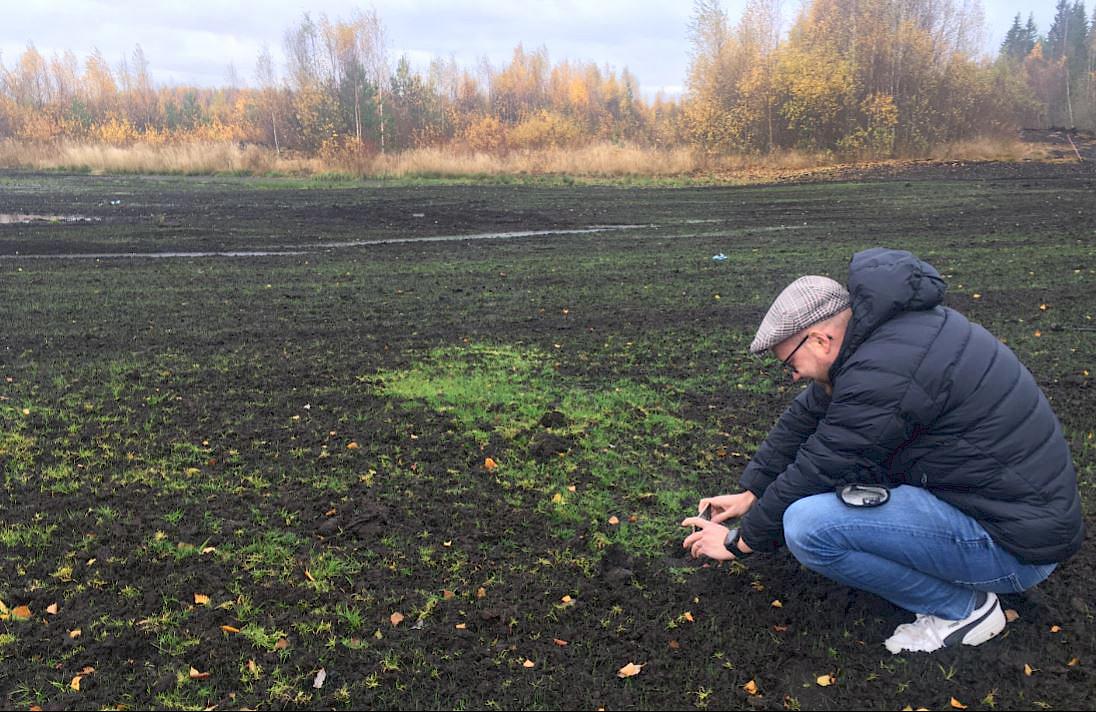Kiertoon! project tests biogas feed from former peat production area
The Kaustinen region’s Kiertoon! project is about finding new operating models for the transition in rural livelihoods, the objective being to maintain the region’s dynamism. The project aims to implement a bioenergy ecosystem incorporating local specificities and based on renewable energy, and demonstrate it in practice. This local ecosystem utilises the project region’s significant reserves of manure from fur animals as well as peat production areas recently removed or being removed from use as renewable energy production areas.
The project is now at the testing phase, where the ability of the digestate from the regional biogas plant to act as fertiliser to improve the growing properties of the soil in a former peat production area will be tested in practice.
- In early autumn, test sowing was carried out at the former peatland, which has been fertilised with digestate from our biogas plant. In spring at the latest we will see how suitable the fertiliser is for growing this sort of biogas feedstock. We assume that lime will need to be added to the digestate in the peatland, says project leader Marko Malvisto.
A biogas study carried out by the project in spring and summer, in which 220 companies in the region were contacted, is now being analysed. The study showed that the necessary raw material for biogas, for instance manure, is abundant in the region.
- The available biomass totals around 330,000 tonnes, with the greatest amounts in Kaustinen, Veteli and Toholampi. The material is situated in a relatively small geographical area of just 70 kilometres across. So you could call it a biomass concentration, says Malvisto.
In September the project modelled an environmental permit and plant authorisation process, based on which a special permit guide will be produced.
- There is great interest in the region in the fertiliser produced by the biogas plant, and producers are willing to get involved in developing biogas activities. The permit jungle is enough to put the most enthusiastic person off, however. The guide gives operators practical assistance by clearly describing how to make the necessary permit applications, says Malvisto.
The next step in the project is to examine the business viability of biogas production. Viability depends on many factors, including subsidy policy for investments and future biogas production, EU directives and a continuation of the obligation to distribute biogas as a transport fuel from the start of 2022.
Read more about the Kiertoon! project:
kaustisenseutu.fi/kaustisen-seutukunta/hankektoiminta/omat-hankkeet/kiertoon/
